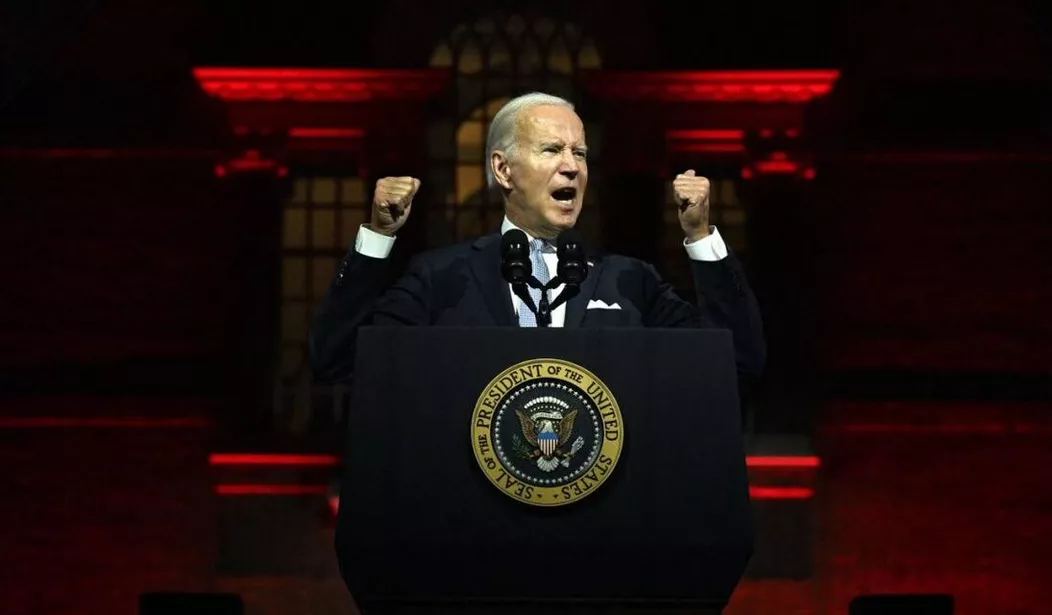Top News
Maybe a Temporary Government Shutdown Is Necessary. The Alternative May Be Worse.

What’s worse? When politicians shut down the government, or when they lock down businesses, stores, schools, churches and restaurants — and nearly all private commerce in America?
If you haven’t heard, the media and congressional Democrats are near cardiac arrest over the prospect of a government shutdown later this year. They may need smelling salts. How dare Congress shut down our vital government services when they are deadlocked on the budget?
But we didn’t hear these kinds of drama queen histrionics when Congress, governors and mayors locked down nearly every private business during COVID in 2020. That effectively brought our economy to a standstill for six months.
Almost overnight, millions of Americans were out of their jobs. Small business revenues collapsed, and tens of thousands of men and women who had put their whole life into their businesses were thrown into bankruptcy due to government lockdown edicts.
Some liberals want to empower the government to shut down the private economy from time to time to combat climate change.
Apparently, the new rules are: You can close the doors of every small business in America, but don’t you dare shut down the Department of Education or Interior or National Public Radio for one day or there will be blood in the streets, senior citizens won’t get their meals on wheels and disabled children won’t have access to social services.
I’m NOT in favor of a government shutdown. But they aren’t the end of the world. The Congressional Research Service reports there have been at least 20 government shutdowns since Jimmy Carter was president. Did anyone outside of Washington really notice that the Federal Trade Commission or the Commodities Future Trading Commission couldn’t meet?
By the way, only “nonessential” programs would be temporarily closed if there were a budget impasse, which raises the question of why a government $2 trillion a year in debt is spending so much money on nonessential anything.
The joke used to be that if you asked a New Yorker to draw a map of the country, they would put a line down the middle of the U.S. and declare everything on the eastern half of the U.S. New York. They had an inflated sense of self-importance.
Now that arrogance characterizes Washington — those who live in “the swamp.” THEY are essential, and the work the rest of us do is trivial. They’ve forgotten that they work for us, not the other way around.
Rather than a government shutdown, wouldn’t it be a joyous occasion if the two parties would pass a financially responsible budget that cuts wasteful spending and at least makes a pretense of trying to reach balance in the next five or eight or 10 years?
The fact that the U.S. government now spends and consumes $7 trillion, nearly one-quarter of our entire GDP, is a depressing state of affairs. Cut it to 20% and we get close to a balanced budget.
Some things are worth fighting for. The Democrats’ alternative to a partial shutdown would be to continue to borrow $2 trillion a year from now into infinity. Did you know that the fastest growing component of our debt is the interest payments on the $33 trillion negative balance on the credit card?
This is the real clear and present danger. This trend line of debt spending could plunge the economy into a deep recession, with millions of Americans plunged into poverty and unemployment lines.
Never again should we allow government to shut down our private economy. The shutdowns during COVID were one of the greatest abuses of power in American history. That’s doubly true now that we have solid evidence that lockdowns didn’t have any positive health effect.
But if it takes a short-term shutdown of some government agencies to force Congress and the White House to get serious about our fiscal ineptitude, then do it. It’s for the children.
Stephen Moore is a senior fellow at the Heritage Foundation and a co-founder of the Committee to Unleash Prosperity. He is the co-author of “Trumponomics: Inside the America First Plan to Revive Our Economy.”
Read the full article here


















